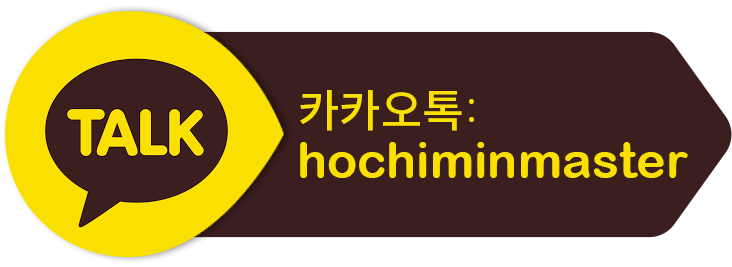Tattoo drawing is step one within the creation of an attractive tattoo. It’s the place concepts are translated into visual art, the place creativity meets the body. Whether you’re designing your personal tattoo or working with knowledgeable tattoo artist, understanding the process and components involved in tattoo drawing is important. This guide delves into the world of tattoo drawing, exploring kinds, methods, and ideas to help you deliver your tattoo concepts to life.
1. Understanding Tattoo Drawing Styles
Tattoo drawings come in various kinds, every providing unique aesthetics and strategies. Here are a number of the most popular styles:
Traditional and Neo-Traditional
Traditional tattoo drawings are identified for his or her bold outlines, vibrant colours, and iconic imagery, similar to roses, anchors, skulls, and eagles. Neo-traditional tattoos take this basic strategy and add modern elements, like softer shading and extra detailed, sensible depictions of animals or objects.
Realism
Realistic tattoo drawings goal to replicate photographs as precisely as attainable. This type usually requires a extremely expert artist who can work with fantastic particulars and shading to provide lifelike portraits, animals, and landscapes. The drawing process for realism requires precision and an understanding of light and shadow.
Watercolor
Watercolor tattoos typically mimic the brushstroke impact seen in watercolor painting. Tattoo artists use softer, gradient colours, without traditional outlines, to offer the tattoo a fluid, inventive really feel. Tattoo drawings in this fashion are sometimes less outlined and extra abstract, specializing in colour blending and movement.
Geometric and Dotwork
Geometric tattoo drawings are made up of shapes like lines, triangles, and circles, tattoo & Piercing In Montreal usually arranged to create intricate patterns. Dotwork tattoos use 1000's of small dots to kind photographs or designs. These types require precision in each the drawing process and the tattooing technique.
2. Tattoo Drawing Techniques and Tools
Tattoo drawing includes more than just sketching on paper. It's an artwork type that requires a keen understanding of design, anatomy, and approach. Some frequent strategies used in creating tattoo designs embrace:
Freehand Drawing
Freehand tattoo drawing is a popular technique where the tattoo artist attracts directly onto the pores and skin utilizing a pen or marker. This technique allows for flexibility and personalization, because it allows the artist to adapt the design to the shopper's body. Freehand drawings are sometimes used for custom designs, especially in larger items.
Transfer Paper
Before the actual tattooing course of begins, tattoo artists generally use switch paper to duplicate the drawing onto the skin. This ensures the design is aligned correctly and helps preserve accuracy during the tattooing course of. The tattoo artist traces over the transfer to create the stencil, ensuring a clear design to follow.
Digital Tattoo Drawing
Many tattoo artists now use digital instruments like graphic tablets and software (such as Procreate or Adobe Illustrator) to create tattoo drawings. Digital tattoo designs offer excessive precision and can easily be adjusted, resized, or modified. Artists can share their designs quickly with purchasers, allowing for real-time collaboration and suggestions.
3. Tips for Creating Your Tattoo Drawing
Creating a Tattoo & Piercing In Montreal drawing can be a rewarding experience. Here are some ideas to assist guide you through the process:
1. Research and Inspiration
Start by gathering inspiration. Look at different tattoos, art, and pictures to get a sense of what you like. Pinterest, Instagram, and tattoo web sites are glorious resources for discovering completely different tattoo styles and ideas. Keep in thoughts that your tattoo must be significant to you, whether or not it’s an image, symbol, or quote.
2. Simplify the Design
Tattoo drawings often must be simplified compared to their authentic kind. Detailed designs can lose clarity when transferred onto skin, particularly if they're small. Focus on clean strains, daring shapes, and a design that can age properly over time.
3. Consider Placement
Think about where you need your tattoo to go. The placement can impact the design, as some drawings may work better on bigger areas, just like the back or forearm, while others could go well with smaller spaces, like the wrist or ankle. Make positive the design flows nicely with the natural lines and curves of your body.
4. Collaborate with a Professional Tattoo Artist
While drawing your tattoo is usually a fun process, working with an expert tattoo artist is important to make sure that your design translates properly onto pores and skin. Tattoo artists have the experience to tweak and adapt your design to suit the unique canvas of your physique. They can also provide recommendation on placement, shade, and dimension.
4. Final Thoughts: From Paper to Skin
Tattoo drawing is a vital a half of the tattooing process. It bridges the gap between a concept in your thoughts and the everlasting artwork in your skin. Whether you choose to create your personal design or collaborate with a tattoo artist, the drawing sets the muse in your tattoo. Keep in thoughts that a good tattoo drawing not solely reflects your character and magnificence but additionally ensures the tattoo ages beautifully.
1. Understanding Tattoo Drawing Styles
Tattoo drawings come in various kinds, every providing unique aesthetics and strategies. Here are a number of the most popular styles:
Traditional and Neo-Traditional
Traditional tattoo drawings are identified for his or her bold outlines, vibrant colours, and iconic imagery, similar to roses, anchors, skulls, and eagles. Neo-traditional tattoos take this basic strategy and add modern elements, like softer shading and extra detailed, sensible depictions of animals or objects.
Realism
Realistic tattoo drawings goal to replicate photographs as precisely as attainable. This type usually requires a extremely expert artist who can work with fantastic particulars and shading to provide lifelike portraits, animals, and landscapes. The drawing process for realism requires precision and an understanding of light and shadow.
Watercolor
Watercolor tattoos typically mimic the brushstroke impact seen in watercolor painting. Tattoo artists use softer, gradient colours, without traditional outlines, to offer the tattoo a fluid, inventive really feel. Tattoo drawings in this fashion are sometimes less outlined and extra abstract, specializing in colour blending and movement.
Geometric and Dotwork
Geometric tattoo drawings are made up of shapes like lines, triangles, and circles, tattoo & Piercing In Montreal usually arranged to create intricate patterns. Dotwork tattoos use 1000's of small dots to kind photographs or designs. These types require precision in each the drawing process and the tattooing technique.
2. Tattoo Drawing Techniques and Tools
Tattoo drawing includes more than just sketching on paper. It's an artwork type that requires a keen understanding of design, anatomy, and approach. Some frequent strategies used in creating tattoo designs embrace:
Freehand Drawing
Freehand tattoo drawing is a popular technique where the tattoo artist attracts directly onto the pores and skin utilizing a pen or marker. This technique allows for flexibility and personalization, because it allows the artist to adapt the design to the shopper's body. Freehand drawings are sometimes used for custom designs, especially in larger items.
Transfer Paper
Before the actual tattooing course of begins, tattoo artists generally use switch paper to duplicate the drawing onto the skin. This ensures the design is aligned correctly and helps preserve accuracy during the tattooing course of. The tattoo artist traces over the transfer to create the stencil, ensuring a clear design to follow.
Digital Tattoo Drawing
Many tattoo artists now use digital instruments like graphic tablets and software (such as Procreate or Adobe Illustrator) to create tattoo drawings. Digital tattoo designs offer excessive precision and can easily be adjusted, resized, or modified. Artists can share their designs quickly with purchasers, allowing for real-time collaboration and suggestions.
3. Tips for Creating Your Tattoo Drawing
Creating a Tattoo & Piercing In Montreal drawing can be a rewarding experience. Here are some ideas to assist guide you through the process:
1. Research and Inspiration
Start by gathering inspiration. Look at different tattoos, art, and pictures to get a sense of what you like. Pinterest, Instagram, and tattoo web sites are glorious resources for discovering completely different tattoo styles and ideas. Keep in thoughts that your tattoo must be significant to you, whether or not it’s an image, symbol, or quote.
2. Simplify the Design
Tattoo drawings often must be simplified compared to their authentic kind. Detailed designs can lose clarity when transferred onto skin, particularly if they're small. Focus on clean strains, daring shapes, and a design that can age properly over time.
3. Consider Placement
Think about where you need your tattoo to go. The placement can impact the design, as some drawings may work better on bigger areas, just like the back or forearm, while others could go well with smaller spaces, like the wrist or ankle. Make positive the design flows nicely with the natural lines and curves of your body.
4. Collaborate with a Professional Tattoo Artist
While drawing your tattoo is usually a fun process, working with an expert tattoo artist is important to make sure that your design translates properly onto pores and skin. Tattoo artists have the experience to tweak and adapt your design to suit the unique canvas of your physique. They can also provide recommendation on placement, shade, and dimension.
4. Final Thoughts: From Paper to Skin
Tattoo drawing is a vital a half of the tattooing process. It bridges the gap between a concept in your thoughts and the everlasting artwork in your skin. Whether you choose to create your personal design or collaborate with a tattoo artist, the drawing sets the muse in your tattoo. Keep in thoughts that a good tattoo drawing not solely reflects your character and magnificence but additionally ensures the tattoo ages beautifully.




